
This parent guide supports parents in helping their child at home with the 6th grade Social Studies content.
- Subject:
- Social Studies
- Material Type:
- Reference Material
- Vocabulary
- Author:
- Kelly Rawlston
- Letoria Lewis
- Date Added:
- 10/12/2022

This parent guide supports parents in helping their child at home with the 6th grade Social Studies content.

This resource accompanies our Rethink 6th Grade Social Studies course. It includes ideas for use, ways to support exceptional children, ways to extend learning, digital resources and tools, tips for supporting English Language Learners and students with visual and hearing impairments. There are also ideas for offline learning.
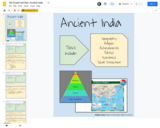
This Ancient Indian Lesson Plan can fit a 1 or 2-week time frame. It focuses on the themes of Geography, Religion, Achievements, Politics, Economics, and Social Structure (G.R.A.P.E.S.). Included in this unit of study is a breakdown of relevant NC Essential Standards, concepts, and skills that match the lesson goals. Some goals will overlap, additional standards and goals can be added to lengthen the unit. Student learning objectives, engagement opportunities, accommodations, and assessment ideas are included.

A website resource that provides facts and data that documents the forced removal of enslaved persons from Africa and their arrival to North Carolina.

In this lesson, students will understand how ancient civilizations developed based on the local physical features and how the boundaries of early civilizations compare to their modern counterparts.

Before we can begin to study the first peoples, it is important to establish the concept of time. Historians use timelines to help aid in the understanding of the time frame in which the topic under study has taken place. The first step is to establish how the past is organized into sections of time. The organization of time into Eras is a choice made by historians. The sections of time that are being used in this book are divided by major turning points (big events that change humans forever) in history. This book is organizing the major Eras into the following four categories: Prehistory, Ancient History, Middle Ages, and Modern History.

Location, location, location. You may have heard this phrase before. It is used by realtors to explain that the most important thing in selling a house is its location. With the civilizations you are about to study, location might be the most important thing that determined the success of those civilizations.
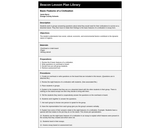
In this lesson, students work in groups answering questions about what they would need for their civilizations to survive on a deserted island. They then have to relate their findings to the basic features of a civilization in essay form.

In this lesson, students use a variety of multimedia resources to analyze the geographic, political, social, economic, and religious structures of the civilizations of Ancient Egypt.

In this lesson, students use a variety of multimedia resources to analyze the geogrpahic, political, social, economic, and religious structures of the civilizations of Ancient India.

In this lesson, students use a variety of multimedia resources to analyze the geographic, political, social, economic, and religious structures of the civilizations of Ancient Rome.
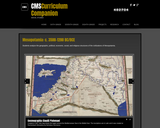
In this lesson, students use a variety of multimedia resources to analyze the geographic, political, social, economic, and religious structures of the civilizations of Mesopotamia.
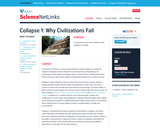
In this lesson, students learn about factors that cause major social changes and about prerequisites for a society’s survival.
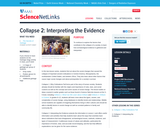
Using an interactive that explores four ancient civilizations - The Maya, Mesopotamia, Chaco Canyon, and Mali/Songhai, students will evaluate and analyze what happens when a society collapses and how archaeologists find and interpret evidence.

If students take away anything from Remarkable Journey, it is hopefully the incredible ways the Indian community has contributed to the progress, growth, diversity and richness of the state of North Carolina. In this activity (best conducted after students have been exposed to multiple clips or the entire film,) students will consider all that they have learned about India and its people then create movie poster for Remarkable Journey that they think best highlights these themes.
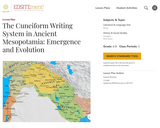
This lesson plan, intended for use in the teaching of world history in the middle grades, is designed to help students appreciate the parallel development and increasing complexity of writing and civilization in the Tigris and Euphrates valleys in ancient Mesopotamia.

In this inquiry, students examine the extent to which the Chinese and Romans had knowledge of and interacted with one another. This inquiry is about the historical antecendent to the Silk Road.

In this 5E lesson, students will be able to describe the effects of geological events on ancient civilizations.

In this lesson, students will familiarize themselves with some basic facts about India that highlight its diversity. Students will then view excerpts from (or the entirety of) Remarkable Journey and utilize the film’s information as a jumping off point to learn about various aspects of Indian culture (food, music, film, clothing, dance, and religion.) Yet, despite such diversity, Asian Indian immigrants to North Carolina, fellow strangers in a strange land, often rely on their shared roots to build new and unified communities. Students will discuss this concept then use their discoveries to create a mural that exemplifies the theme: "India: Unity in Diversity."

India is a diverse land of religions and spirituality. It is not only the birthplace of Hinduism, Buddhism, Jainism, and Sikhism, but numerous other faiths are practiced there, including Islam, Christianity, Judaism, Zoroastrianism, and others. Through viewing clips from Remarkable Journey and completing the following activities, students will explore the various religions with connections to India, as well as the way Asian Indians have integrated their diverse religions into communities across North Carolina. As a culminating activity, students will delve further into one particular religion mentioned during class by creating a scrapbook of that religion.